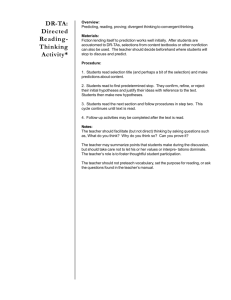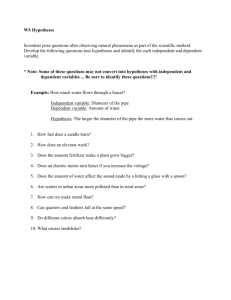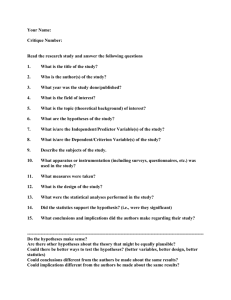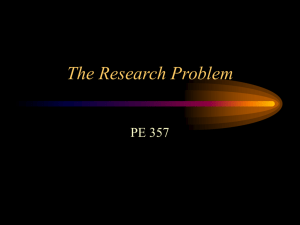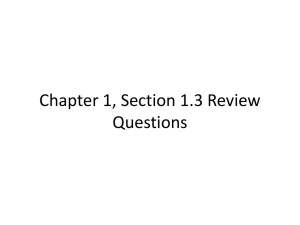NCSP CASE STUDY
advertisement
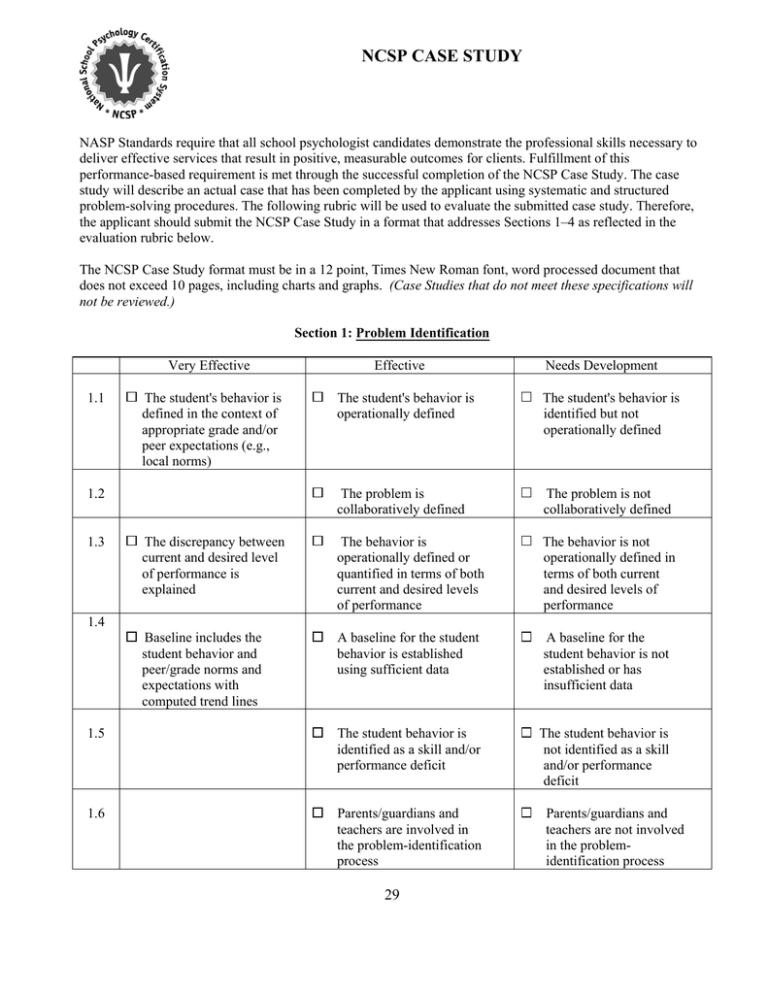
NCSP CASE STUDY NASP Standards require that all school psychologist candidates demonstrate the professional skills necessary to deliver effective services that result in positive, measurable outcomes for clients. Fulfillment of this performance-based requirement is met through the successful completion of the NCSP Case Study. The case study will describe an actual case that has been completed by the applicant using systematic and structured problem-solving procedures. The following rubric will be used to evaluate the submitted case study. Therefore, the applicant should submit the NCSP Case Study in a format that addresses Sections 1–4 as reflected in the evaluation rubric below. The NCSP Case Study format must be in a 12 point, Times New Roman font, word processed document that does not exceed 10 pages, including charts and graphs. (Case Studies that do not meet these specifications will not be reviewed.) Section 1: Problem Identification Very Effective Effective Needs Development The student's behavior is operationally defined The student's behavior is identified but not operationally defined The problem is collaboratively defined The problem is not collaboratively defined The discrepancy between current and desired level of performance is explained The behavior is operationally defined or quantified in terms of both current and desired levels of performance The behavior is not operationally defined in terms of both current and desired levels of performance Baseline includes the student behavior and peer/grade norms and expectations with computed trend lines A baseline for the student behavior is established using sufficient data A baseline for the student behavior is not established or has insufficient data 1.5 The student behavior is identified as a skill and/or performance deficit The student behavior is not identified as a skill and/or performance deficit 1.6 Parents/guardians and teachers are involved in the problem-identification process 1.1 The student's behavior is defined in the context of appropriate grade and/or peer expectations (e.g., local norms) 1.2 1.3 1.4 29 Parents/guardians and teachers are not involved in the problemidentification process Section 2: Problem Analysis Very Effective Effective Needs Development 2.1 Hypotheses are generated through collaboration with teacher and/or parent One or more hypotheses are developed to identify the functions that the behavior serves and/or the conditions under which the behavior is occurring or has developed in two or more of the following areas: child factors, curriculum, peers, teacher, classroom, home Hypotheses are not developed, hypotheses are developed in only one area and/or hypotheses are not measurable 2.2 There are multiple sources of data that converge on each proposed hypothesis There is evidence that appropriate data are collected to confirm or reject the proposed hypotheses. Appropriate data include one or more of the following: record review, interview, observation, testing, and self report Appropriate data are not collected to confirm or reject the hypotheses Hypotheses reflect an awareness of issues of diversity (e.g., physical, social, linguistic, cultural) Hypotheses do not reflect an awareness of issues related to diversity (e.g., physical, social, linguistic, cultural) 2.3 30 Section 3: Intervention Effective Needs Development 3.1 Intervention is linked to observable, measurable goal statement(s) Intervention is not linked to observable, measurable goal statement(s) 3.2 Intervention(s) selection is based on data from problem analysis and hypothesis testing Intervention(s) selection is not based on data from problem analysis and hypothesis testing 3.3 Intervention(s) is evidence-based (e.g., research literature, functional analysis, single-case design analysis Intervention(s) is not evidence-based (e.g., research literature, functional analysis, single-case design analysis) 3.4 Intervention(s) is developed collaboratively Intervention(s) is not developed collaboratively 3.5 Intervention(s) reflects sensitivity to individual differences, resources, classroom practices, and other system issues. Acceptability of intervention is verified Intervention(s) does not reflect sensitivity to individual differences, resources, classroom practices, and other system issues. Acceptability of intervention is not verified 3.6 Logistics of setting, time, resources and personnel are included in the intervention plan Logistics of setting, time, resources and personnel are not included in the intervention plan 3.7 Intervention selection considers unintended outcomes or limitations Intervention selection does not consider unintended outcomes or limitations 3.8 Intervention is monitored and data are provided to ensure that it is implemented as designed Treatment integrity is not monitored 31 Section 4: Evaluation Very Effective Effective Needs Development 4.1 Charting includes student performance trend lines, and/or goal lines Progress monitoring data are demonstrated on a chart Progress monitoring data are not demonstrated on a chart 4.2 Progress monitoring data are demonstrated to be effective when compared to data generated from multiple sources/settings Progress monitoring data are demonstrated to be effective when compared to baseline data Intervention is not demonstrated to be effective through data comparison 4.3 Response to intervention data are used to inform problem solving and decision making. Singlecase design was specified (e.g., changing criterion, parametric, component analysis, multiple baseline, alternating treatment) Data are used to inform further problem solving and decision making (i.e., continuation of intervention, modification of intervention, maintenance of intervention) Data are not used to inform further problem solving and decision making 4.4 Strategies for transfer/generalizing outcomes to other settings are documented as effective Strategies for transfer/generalizing outcomes to other settings are addressed Strategies for transfer/generalizing outcomes to other settings are not addressed 4.5 Modifications for future interventions are considered based upon collaborative examination of effectiveness data Effectiveness of intervention is shared through collaboration with parents, teachers, and other personnel Effectiveness of intervention is not shared or communicated 4.6 Strategies for follow-up are developed and implemented Suggestions for followup are developed (e.g., continued progress monitoring, transition planning) Suggestions for followup are not developed 32
